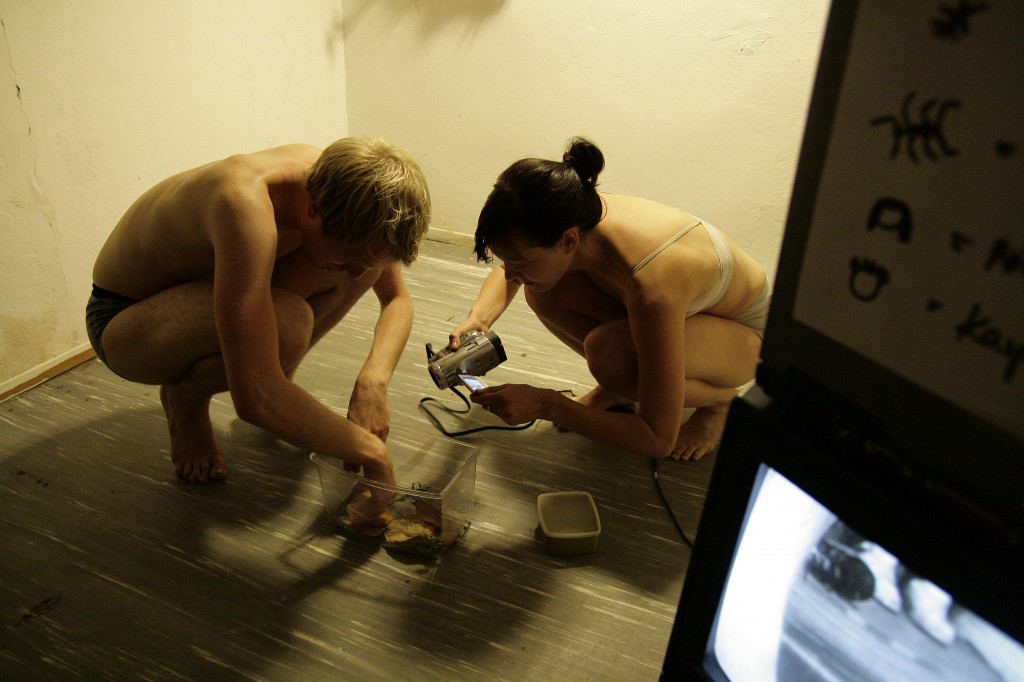
Two performers share a stage with two spiders. A series of images, variations and juxtapositions follow in which the performer allows a spider to crawl over his/her body, ensuring that the spider does not fall to the floor; A delicate play of control and influence.
Who is dictating the choreography? How much has the performance been predetermined? How much is the dancer able to control or influence the situation/insect? Could the same question also be applied to the relationship a performer has to a director or choreographer? What narrative content is being generated or made possible?
In an exercise of experimental choreography, the performer is following a set of instructions or rules (For example that there will be no direct ‘3rd’ point of contact or interference and that the spider does not fall on the floor), allowing only the contact between insect and skin to influence (or dictate) the choreography. To what extent this can be labelled ‘improvisation’ is open to debate.
Potential narratives:
1. The relationship/balance between two individuals
2. The relationship/balance between a choreographer and a dancer
3. The relationship/balance between nature and we/me/us
Performed by Kaspar Wimberley and Nicki Liszta
Dancing with ten legs was funded by the Stiftungen Landesbank Baden-Wurttemberg, the Ministerium für Wissenschaft, Forschung und Künst Baden Württemberg and the Interventionsraum e.V. and performed at the Interventionsraum in Stuttgart, and the Man.in.Fest Festival in Romania.


